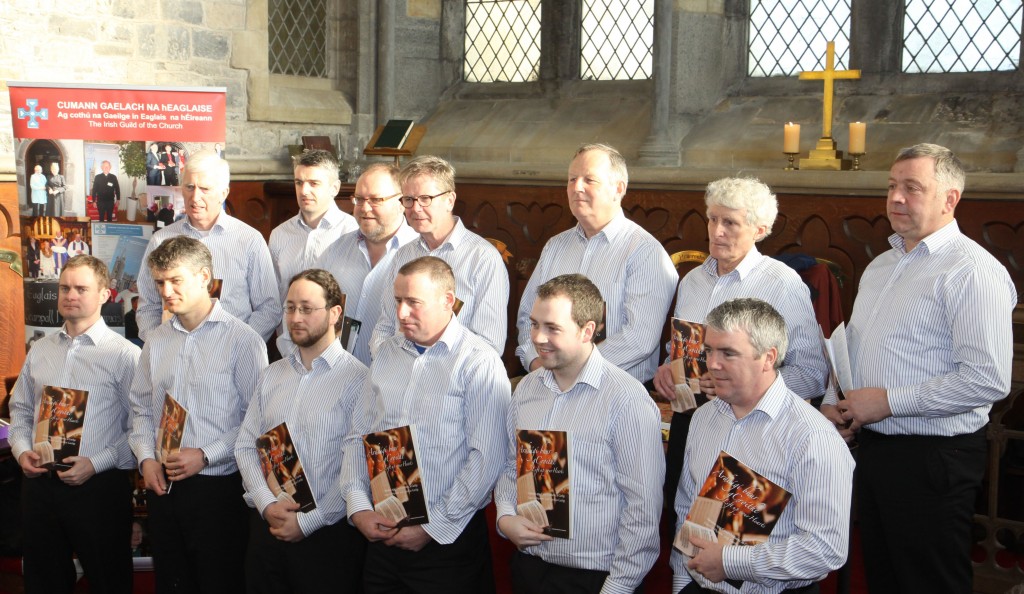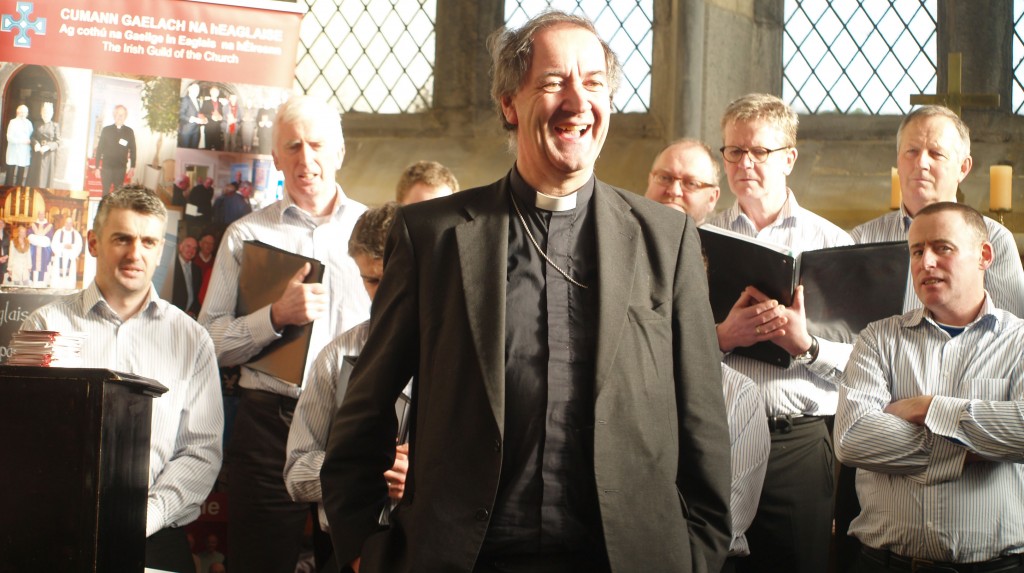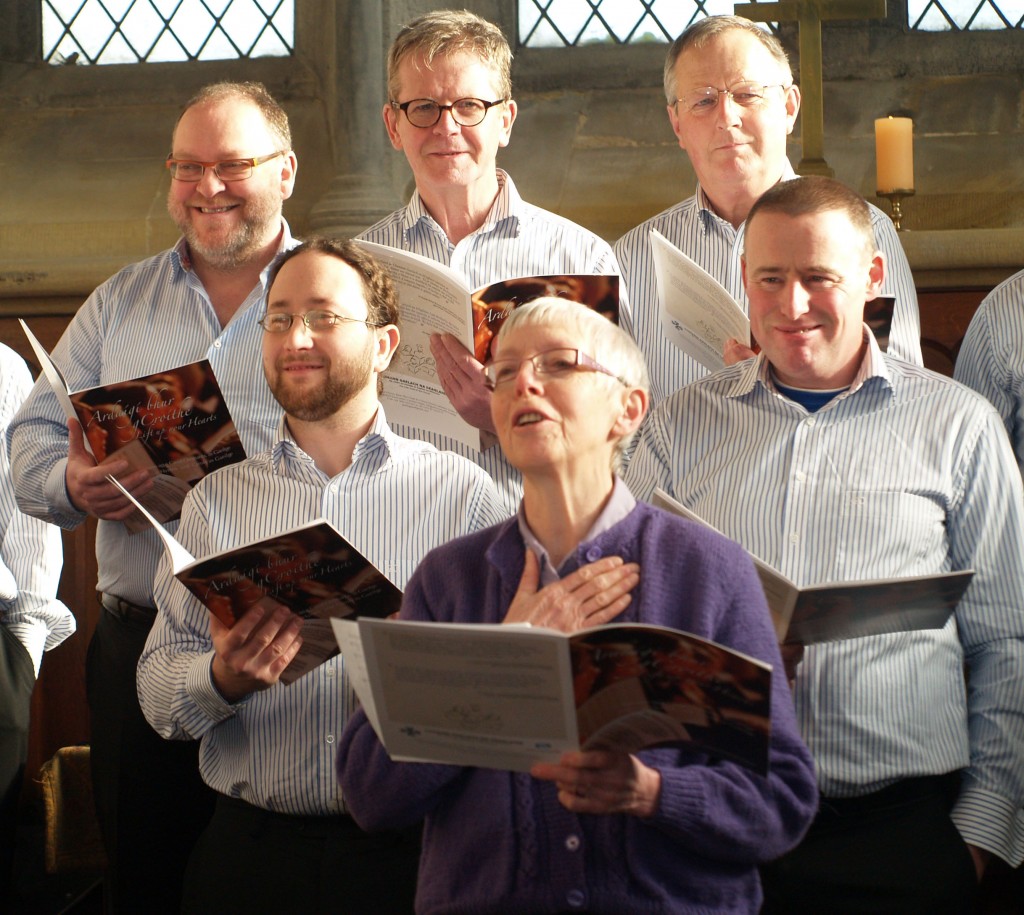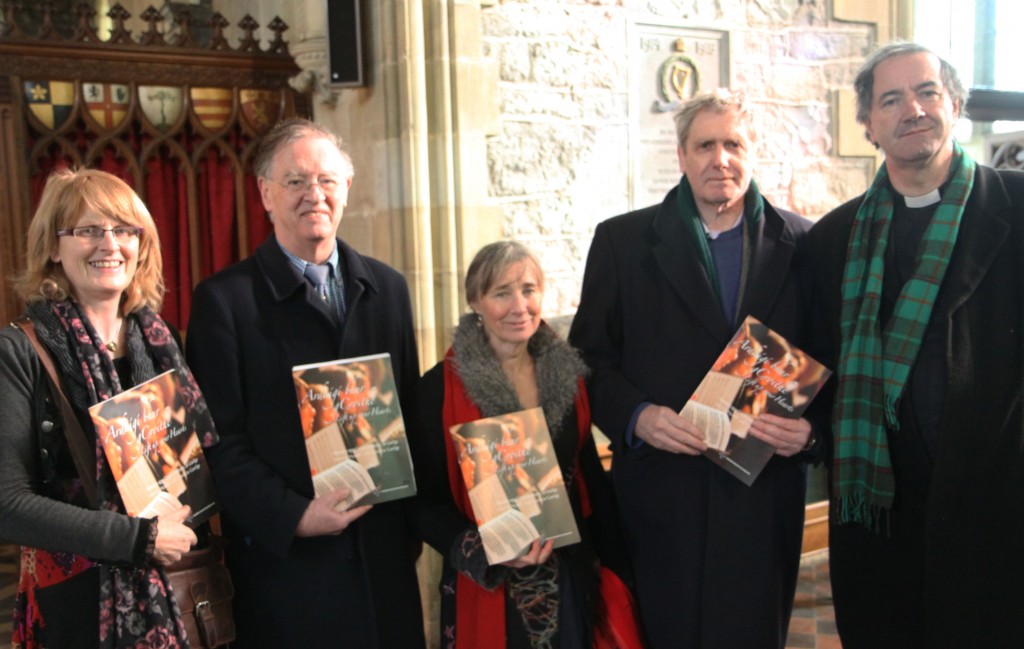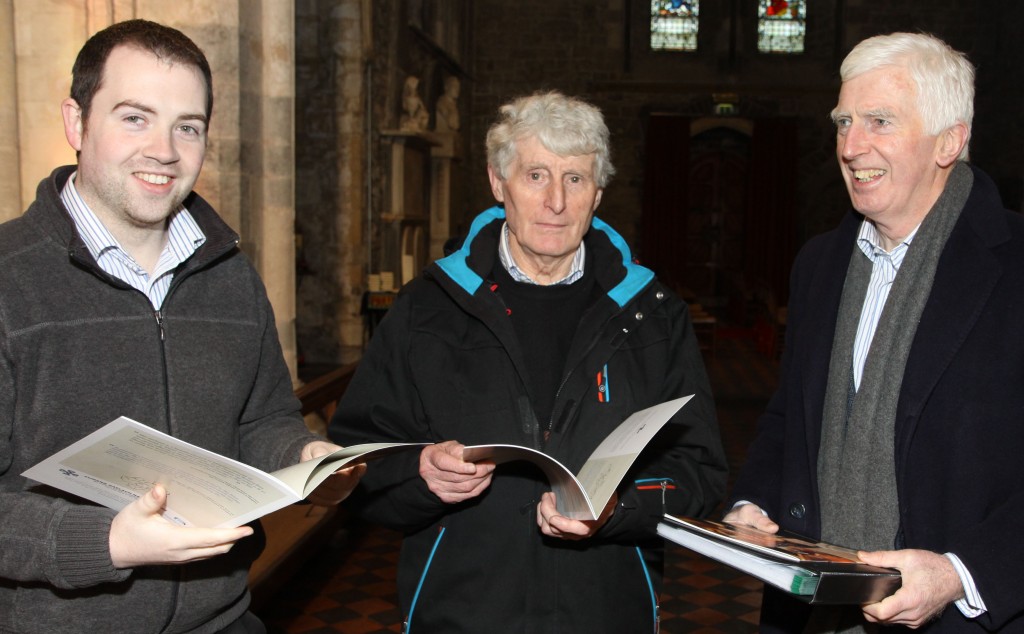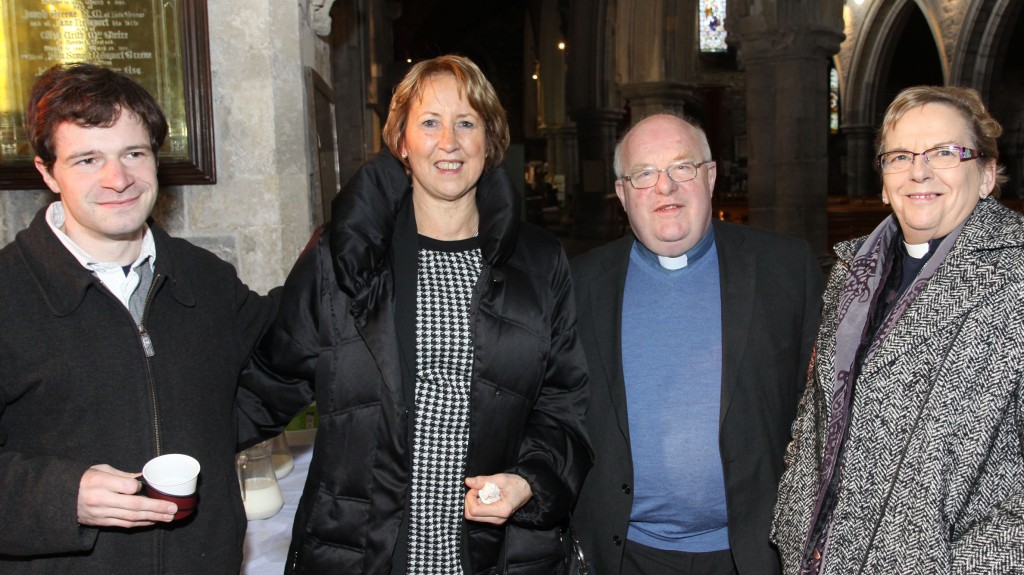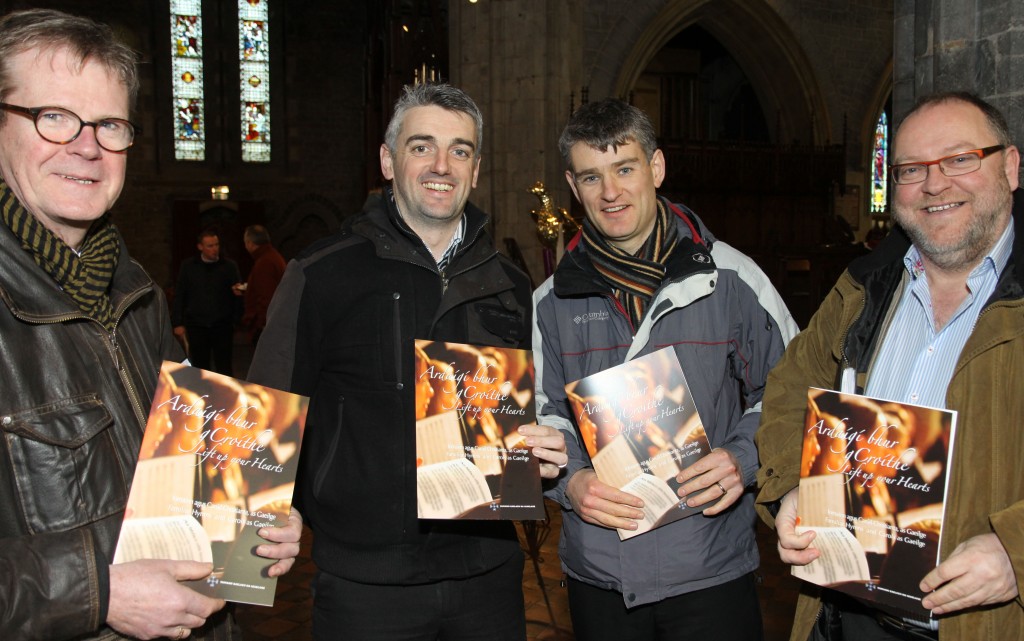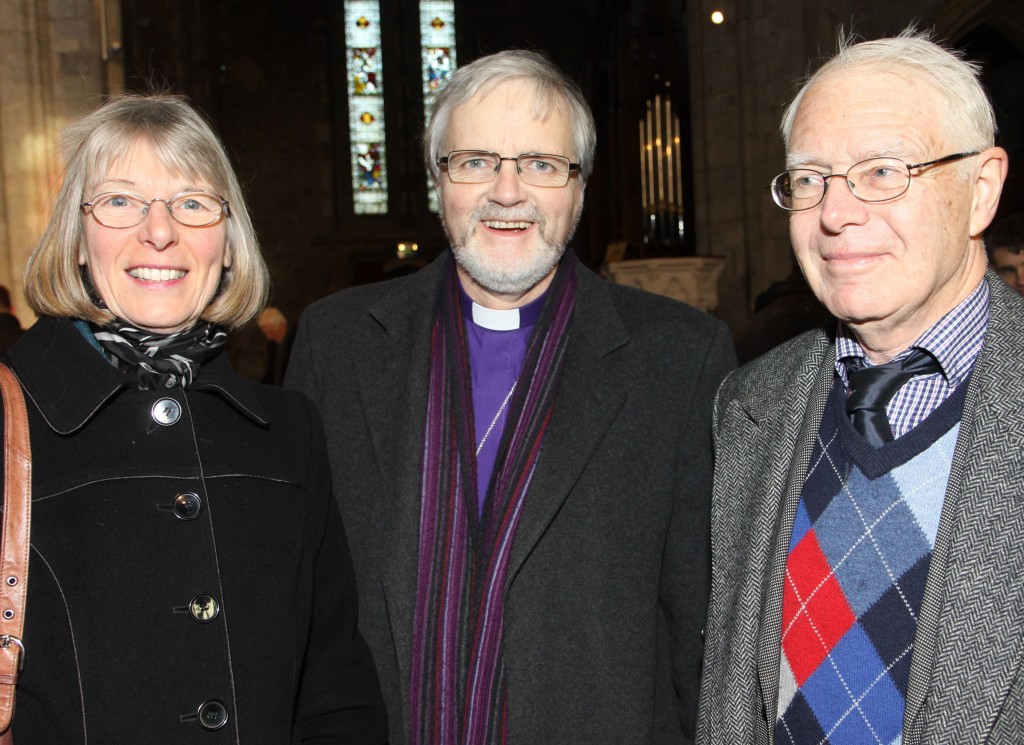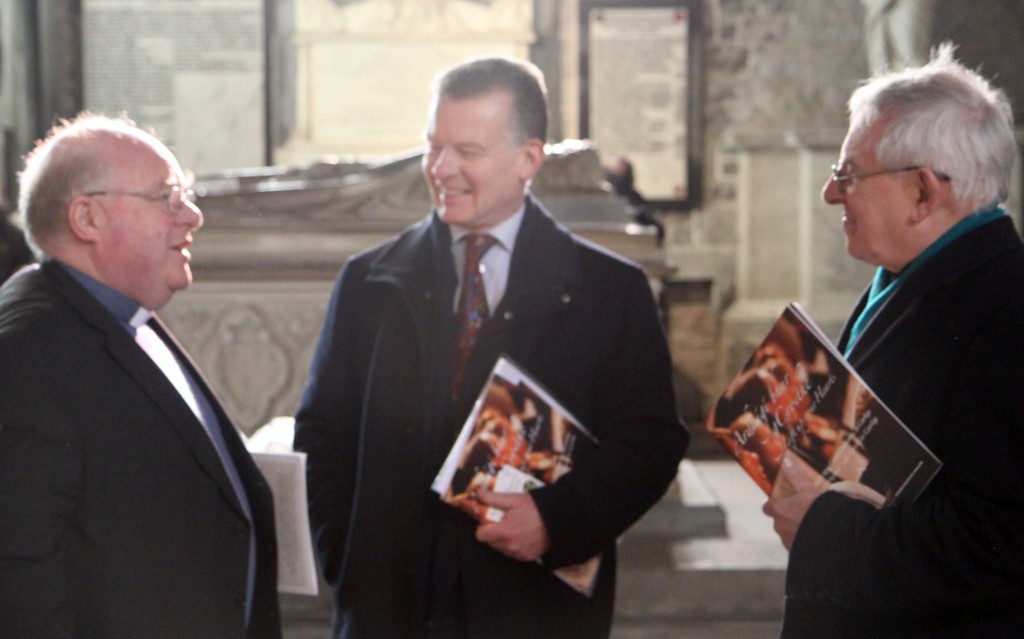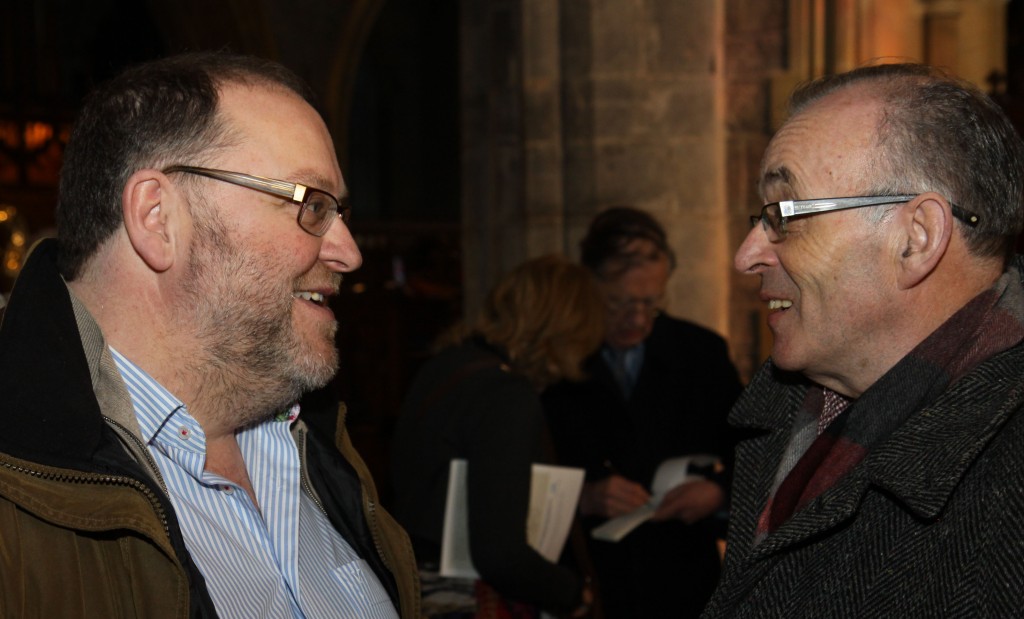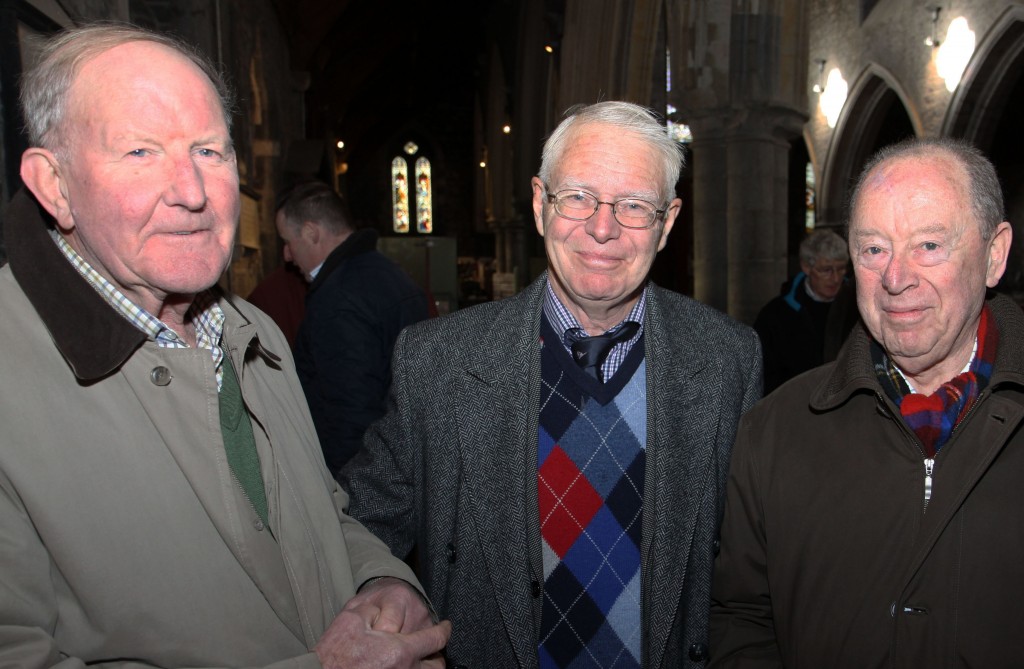Ardaígí bhur gCroíthe – Lift up your Hearts
Iomainn agus Carúil Choitianta, as Gaeilge
Familiar Hymns and Carols as Gaeilge
NEW CD AND HYMNAL LAUNCHED IN IRISH IN KILKENNY
Cumann Gaelach na hEaglaise
Cumann Gaelach na hEaglaise launched this CD of 16 hymns and carols, Iomainn agus Carúil Choitianta, as Gaeilge, to meet the needs of the growing number of congregations around the country that seek to worship in Irish or bilingually and would like to include some hymns in their services.
A bilingual hymn book accompanies the CD. The hymn book is intended to supplement the Church Hymnal which already contains a number of hymns in Irish.
Among a large gathering from all corners of the country, the CD was launched jointly by the Right Revd Michael Burrows (Patron of Cumann Gaelach na hEaglaise) Bishop of Cashel, Ferns and Ossory and the Right Revd Robert Paterson, Bishop of Sodor and Man who spoke on how Manx is being incorporated into worship in the Isle of Man.
The soloists, Cárthach MacCraith, Jacynth Hamill, Éamonn Ó Faogáin and Darren Ó Droma performed at the launch and they were accompanied by ‘Cór Fear na nDéise’ from Co. Waterford.
As well as the two bishops, words of welcome and acknowledgement were spoken by Daíthí O Maolchoille (Chairperson) and Caroline Nolan (PRO).
Bishop Michael Burrows, Patron of Cumann Gaelach na hEaglaise, welcomed everyone, and said ‘I’m delighted about this latest initiative on the part of Cumann Gaelach na hEaglaise and it is a particular pleasure that this launch is taking place in Kilkenny during the visit of Bishop Robert Paterson from the Isle of Man.
His diocese and ours have had a companion relationship for some years now and I have admired the manner in which he has effectively promoted the use of Manx in liturgy… rarely himself completing a service without using some words of it!’
Bishop Burrows had always thought there was need for an improvement in the status of Irish within the COI liturgy since his TCD days when what was available wasn’t altogether attractive to those of his age at that time. Irish hymns were not included in the 1960s hymnal but some Irish hymns did appear in the 2000s edition of the Irish Hymnal, there at least 10 and they are frequently used.
Some years ago the bilingual edition of the prayer book was published and now these hymns with translations were being launched and ahead of the new supplement to the current hymn book, ‘Thanks and Praise’, to be published in due course.
This booklet of hymns offers a variety of styles and seasons and gives another way of encouraging enthusiasm to worship in Irish, despite the limitations of some people’s proficiency in the language. It also helps to push the contact with the language beyond the context of both primary and secondary education, so long the limiting factor for so many people.
As well as new hymns, there a number of familiar favourites: ‘Is iontach grás’ (‘Amazing Grace’), ‘Bí Thusa i mo shúile’ (‘Be Thou my Vision’), ‘Ag Críost an Síol’(‘Christ is the Seed’) and ‘Sé an Tiarna m’aoire’ (‘The Lord is my Shepherd’). There are some seasonal well-known Christmas songs such as ‘Oíche Chiuin’ (‘Silent Night’), ‘Tar Chugainn’ (‘O Come Emmanuel’) and ‘I nDúlaíoght an Gheimridh’ (‘In the Bleak Mid-winter’). There are also some hymns suitable for services with children and hand actions. It is primarily aimed at small services where there is no choir present.
In his remarks Bishop Robert Paterson declared his own limitations in both Manx and Welsh where he had lived for many years. But he did try to speak both when the opportunities arose. Manx is a mixture of all the Celtic tongues with some English thrown in for good measure.
The Bishop said he had served on the Liturgical Advisory Committee in Wales for many years and instead of straight translation from English to the target language, it was found preferable to use the more poetic disposition of the Welsh liturgy to be constructed initially and then translated into English which seemed to enrich the language considerably. As a result many of the ancient Welsh Christian songs have found their way into English liturgy in Wales.
Manx Gaelic almost died out in the 20th Century but today it is being encouraged, especially by the church. And now there is a Manx language primary school. About 5% of the population on the island speak Manx fluently. There are booklets to help in translation and the Lord’s Prayer is always said in Manx in the cathedral.
And so the Bishop of Sodor and Man officially launched the book and CD and was delighted to bring them back to the Isle of Man, especially to the singers and choirs.
The launch was followed by a short bilingual service with music led by Roisin Rowley-Brooke, the cathedral organ scholar, along with members of the cathedral choir which David Forde also conducted and played the organ. ‘Cór Fear na nDéise’ also added to the singing. The service was led by Bishop Burrows who invited all to say the Lord’s Prayer in whatever language they were comfortable with to sound a cacophony of diverse worship. The Bishop of Sodor and and Man gave the final blessing in Manx.
There was a light lunch afterwards and thanks was offered to those who had organised the refreshments.
The exhibition, An Ghaeilge in Eaglaise na hÉireann, will shortly go on display around the Diocese. It provides an insight into the role of extraordinary men and women in the Church who have been advocates for the place and role of the Irish language in the life of the church.
Further information is available from Caroline Nolan, Irish Language Development Officer
Tel: 00+353 85 1632772 or 00+44 7885 633651 or by email: gaeleaglais@gmail.com or www.facebook.com/gaeleaglais
Cumann Gaelach na hEaglaise:
The Irish Guild of the Church was founded in 1914 to (1) promote all that tends to preserve within the Church of Ireland the spirit of the ancient Celtic Church and to provide a bond of union for all members of the Church of Ireland inspired with Irish ideals, (2) promote the use of the Irish language in the Church, (3) collect from Irish sources suitable hymns and other devotional literature, (4) encourage the use of Irish art and music in the Church.
==============================



